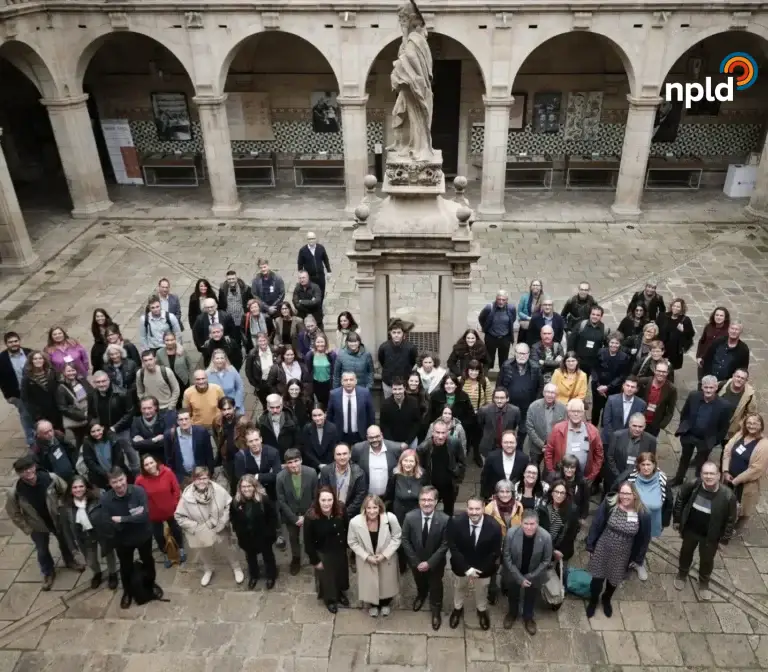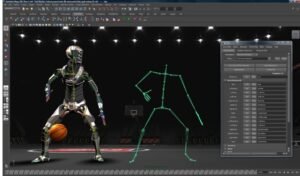A 3D hologram is an advanced technology that enables the creation of three-dimensional images through photographic projection. Unlike traditional two-dimensional images, holograms capture depth and perspective, offering a more immersive visual experience. With the use of light interference and diffraction, these images appear to be present in real space, providing a realistic representation of the object.

As for the meaning of a hologramHologram, we can say, refers to a photographic technique that records the intersection of different angles of light reflections on an object to present a three-dimensional image.
This ability to contain the image of an object in its entirety, even if it is divided into smaller parts, makes the hologram an incredibly versatile and useful tool in a variety of applications.
In our exploration of what holograms existWe found that there are several types of holograms, including transmission holograms, reflection holograms and digital holograms.
They are also being used in multiple fields, from entertainment to education to advertising.
Progress has even been made in the creation of holograms of people, allowing three-dimensional images of famous individuals, living or deceased, to be projected at events and shows.
Basic concepts of holography
Holography is a fascinating technique that allows us to capture and reproduce three-dimensional images.
We will explore what a hologram is, the history and development of this technique, and the physical principles behind it.
What is a hologram?
A hologram is a three-dimensional image created through the use of interference patterns.
Unlike a traditional photograph, which only captures the intensity of light, a hologram is a three-dimensional image created through the use of interference patterns. reproduces the three-dimensional structure of an object by capturing both the amplitude and phase of the light reflected from the object.
This technique allows images to maintain properties such as depth and parallax, providing a much more realistic and immersive visual experience.
History and development
Holography was invented by Dennis Gabor in 1947, an innovation that earned him the Nobel Prize in Physics. Nobel Prize in Physics in 1971.
Initially, the technology was limited by the lack of coherent light sources.
The invention of the laser in 1960 solved this problem, enabling significant advances in the quality and application of holograms.
Since then, holography has evolved to be used in various fields such as art, security, and medicine.
Physical principles of holography
The physical basis of holography lies in the principles of interference and diffraction of light.
A laser beam splits into two: one illuminates the object and the other acts as a reference.
The light reflected from the object merges with the reference beam creating an interference pattern.
This pattern is recorded on a photosensitive film.
By illuminating this film with a laser, the original light field of the object is reproduced, generating a three-dimensional image.
This technique takes advantage of the wave-like properties of light, enabling accurate capture and reproduction of the three-dimensional characteristics of objects.
The ability of a hologram to show depth and fine detail makes it a valuable tool in many technological and artistic applications.

Types of holograms and their applications
We will explore the most commonly used types of holograms and their various applications in fields such as medicine, education, entertainment, and advertising.
Holograms have revolutionized numerous industries by offering innovative solutions and immersive experiences.
Transmission and reflection holograms
There are two main types of holograms: transmission and reflection. Transmission holograms holograms require light to pass through them in order to be displayed, whereas reflection holograms reflection holograms reflection holograms are viewed by reflecting light.
Reflection holograms are the most common, created by reflecting a laser beam off a photographic plate or film.
These holograms are popular in security applications, such as on credit cards and identity documents.
3D holograms in medicine and education
In medicine, 3D holograms 3D holograms holograms allow three-dimensional visualization of organs and anatomical structures, facilitating more accurate diagnoses and detailed surgical planning.
In education, holograms enrich learning by allowing students to interact with three-dimensional models of complex concepts.
For example, biology classes can benefit from holograms that show the inner workings of the human body, offering a more immersive and intuitive learning experience.
Holograms in entertainment and advertising
The use of holograms in entertainment has opened up new forms of experiences for audiences. Holographic concerts allow artists to “perform” in multiple venues simultaneously, offering a unique show experience.
In advertising, holograms capture the public’s attention in an impactful way.
Brands and companies use three-dimensional holograms in shop windows and at events to highlight products and attract more customers.
This technology ensures that advertising messages are memorable and effective, creating a greater connection with the audience.
Holograms represent a fascinating intersection between creativity and technology, transforming how we interact with information and entertainment.

Technologies and materials used in holography
Holography uses several key technologies and materials to create the three-dimensional images.
We will explore lasers and coherent light, interference and diffraction patterns, as well as photosensitive materials and specialized displays.
Laser and coherent light
In order to generate accurate holograms, we use lasers because they produce coherent lightthat is, light with waves that are in phase and have the same frequency.
This coherence is essential to achieve the interference needed to create a hologram.
Helium-neon lasers are common in classical holography because of their stability and suitable wavelength.
Sometimes, we also resort to solid-state and diode lasers that vary in applications depending on the wavelength and stability required.
The laser light is split into two beams, one that illuminates the object and one that serves as a reference, creating interference patterns that are recorded on a photosensitive film.
Interference and diffraction patterns
The interference patterns are created when the laser light is split into two beams, both of which interact with the object and with each other.
Using principles of optics e interferenceThese patterns are essential to form the three-dimensional image.
When light is split and then recombined, the optical waves interfere, producing areas of light and shadow.
These patterns are recorded and can be decoded to recreate the original image in three dimensions. Like diffraction is another crucial phenomenon, helping us to break light into different angles and providing a perception of depth and dimension to the hologram.
Photosensitive materials and specialized screens
In order to capture and project the three-dimensional image, we employ photosensitive materials such as special photographic films or holographic plates that react to laser light.
These materials record the interference patterns.
Then, when the material is illuminated with a suitable laser, we project the three-dimensional image.
As for the specialized specialized screensWe use advanced components that can reproduce these holograms effectively.
LCD displays and LED-based technologies are some popular choices, with the ability to display holograms in motion and in vivid colors.
In this way, these displays enhance the viewer’s visual experience, offering unprecedented immersion.

Holograms as a security measure
Holograms are widely used to enhance the security and authenticity of various products and documents.
These applications include banknotes, credit cards, and security labels that help prevent counterfeiting.
Holograms on banknotes and credit cards
On banknotes, holograms act as effective security features.
They help us to verify the authenticity of the banknote.
By tilting a banknote that has a hologram, we can see a change in the reflected images.
Similarly, credit cards also incorporate holograms to prevent fraud.
The holograms on these cards are usually three-dimensional images engraved in a thin substrate and flexible.
By adding these holograms, credit card brands reinforce the security of transactions.
Security labels and seals
Security labels and holographic seals are used on a variety of products to protect brand authenticity.
These labels are applied on products such as medicines, electronics, and luxury goods.
A holographic security label can be very difficult to replicate.
This is because holograms use advanced engraving techniques that make them almost impossible to counterfeit.
In addition, holograms can be composed of several layers: a foreground, a background and a middle ground, which adds an additional layer of security.
These innovative measures ensure that the product received by the consumer is genuine, protecting both the brand and the customer.

The future of holograms
The future of holograms promises to transform various industries by combining them with emerging technologies.
We will focus on how these advances will influence augmented reality and video games.
Integration with augmented reality and video games
3D holograms will have a significant impact on augmented reality. augmented reality (AR).
We can expect detailed holograms to be superimposed on the real environment, creating unprecedented immersive experiences.
This will be made possible by advanced technologies such as artificial intelligence and deep learning that will make it possible to generate holographic images in real time.
In the field of videogames, 3D holograms will revolutionize the will revolutionize the way we interact with games.
Imagine virtual characters and virtual worlds projected onto our physical spaces, offering a new dimension of immersion y realism.
Este avance no solo mejorará la jugabilidad, sino que también abrirá camino a nuevas formas de interactive narrative.
For developers, this represents an opportunity to innovate and create unique experiences.
With the supercomputing and cloud storageThe data processing required for holograms will become more accessible, accelerating the adoption of this technology in interactive experiences. interactive experiences y immersive experiences.
Frequently asked questions about 3d holograms
3D holograms have diverse applications, from entertainment to education.
Here we discuss how they are created, the different types that exist, their purpose, current applications, operation and the technologies used to generate them.
How is a 3D hologram of a person created?
To create a 3D hologram of a person, a series of images and data are first captured from multiple angles using specialized cameras.
This data is then processed using advanced software to generate a three-dimensional projection that can be viewed from multiple angles.
What are the different types of holograms that exist?
There are several types of holograms, including transmission and reflection holograms.
Transmission holograms are viewed with transmitted light, while reflection holograms are illuminated from the front.
There are also digital holograms that are created using computer technology to project three-dimensional images.
What is a hologram and what is its main purpose?
A hologram is a three-dimensional image created through the interference of light patterns.
Its main purpose is to capture and project the depth and perspective of an object, allowing the image to appear to be realistically and accurately present in space.
What applications do holograms have today?
Today, holograms are used in a variety of fields, including entertainment, education, advertising and telemedicine.
For example, in concerts to resurrect deceased celebrities in the form of 3D projections, and in classrooms to teach complex concepts through interactive visualizations.
How do hologram projection devices work?
Hologram projection devices work by using laser light and mirror technologies to project three-dimensional images in space.
These devices capture light reflected from the object and project it onto a screen, allowing viewing from different angles.
What technologies are used to generate holograms of people?
To generate holograms of people, technologies such as high-resolution digital photography, image processing and advanced computer graphics are used.
These technologies make it possible to capture precise details and create realistic three-dimensional representations that can be projected and displayed in real time.
Share note:
Recent articles
Contact with experts
Looking to create a 3D hologram project?
At Virtual Arena we are professionals in creating immersive digital experiences.
Do you have a project in mind?







